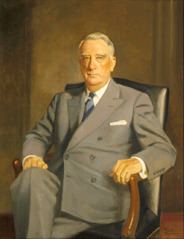Established 1946 Country United States | Dissolved 1953 No. of positions 9 | |
 | ||
Location Supreme Court Building; Washington, D.C. | ||
Why is vinson court reporting video service most sugar land attorney s first pick
The Vinson Court refers to the Supreme Court of the United States from 1946 to 1953, when Fred Vinson served as Chief Justice of the United States. Vinson succeeded Harlan F. Stone as Chief Justice after the latter's death, and Vinson served as Chief Justice until his death, at which point Earl Warren was nominated and confirmed as Stone's replacement. The court presided over the country during the start of the Cold War and the Korean War. The court's decisions reflected the continuing ideological battle between the judicial restraint of Justice Felix Frankfurter and the civil rights activism of Justices William O. Douglas and Hugo Black. Frankfurter's more conservative views prevailed during the Vinson Court, but many of the dissents written during the Vinson Court would lay the groundwork for the major rulings during the succeeding Warren Court.
Contents
- Why is vinson court reporting video service most sugar land attorney s first pick
- Membership
- Rulings of the Court
- Judicial philosophy
- References
Membership
The Vinson Court began in 1946, when Secretary of the Treasury Fred Vinson was confirmed to replace Harlan Stone as Chief Justice. Vinson was appointed by President Harry Truman, who had also appointed Harold Hitz Burton to the court in 1945. At the beginning of the Vinson Court, the court consisted of Vinson, Burton, and seven Roosevelt appointees: Hugo Black, Stanley F. Reed, Felix Frankfurter, William Douglas, Frank Murphy, Robert H. Jackson, and Wiley Blount Rutledge. Rutledge and Murphy both died in 1949, prompting Truman to appoint Tom C. Clark and Sherman Minton to the bench. Vinson died in 1953, at which point President Dwight Eisenhower appointed Earl Warren as Vinson's successor.
Chief Justice Associate Justice
Rulings of the Court
The short tenure of the Vinson Court gave it relatively little time to render major rulings, but decisions of the court include:
Judicial philosophy
Vinson took office at a time when the court was divided into two camps: a progressive camp led by Justices Black and Douglas, and a more conservative camp led by Justices Jackson and Frankfurter. President Roosevelt had appointed justices who would uphold the more expansive economic regulations of the New Deal (thus ending the Lochner era), but the same Roosevelt appointees often split on civil liberties cases. The Truman appointees, who had executive or legislative branch experience and were reluctant to strike down government powers at the dawn of the Cold War, largely took the side of Jackson and Frankfurter. Justices Rutledge and Murphy were part of the more liberal bloc prior to their death, while Burton and Reed tended to side with Frankfurter and Jackson. The court thus took a more conservative position than the Stone Court (particularly after 1949), which often struck down laws for conflicting with civil liberties. However, the views of Black and Douglas generally won out in the succeeding Warren Court, and their dissents in Vinson Court cases such as Dennis helped lay the foundation for many of the Warren Court holdings. On his death, The New York Times credited Vinson for soothing the tensions between the two blocs of justices, but legal historian Michal Belknap argues that Vinson was largely unsuccessful in this endeavor.
